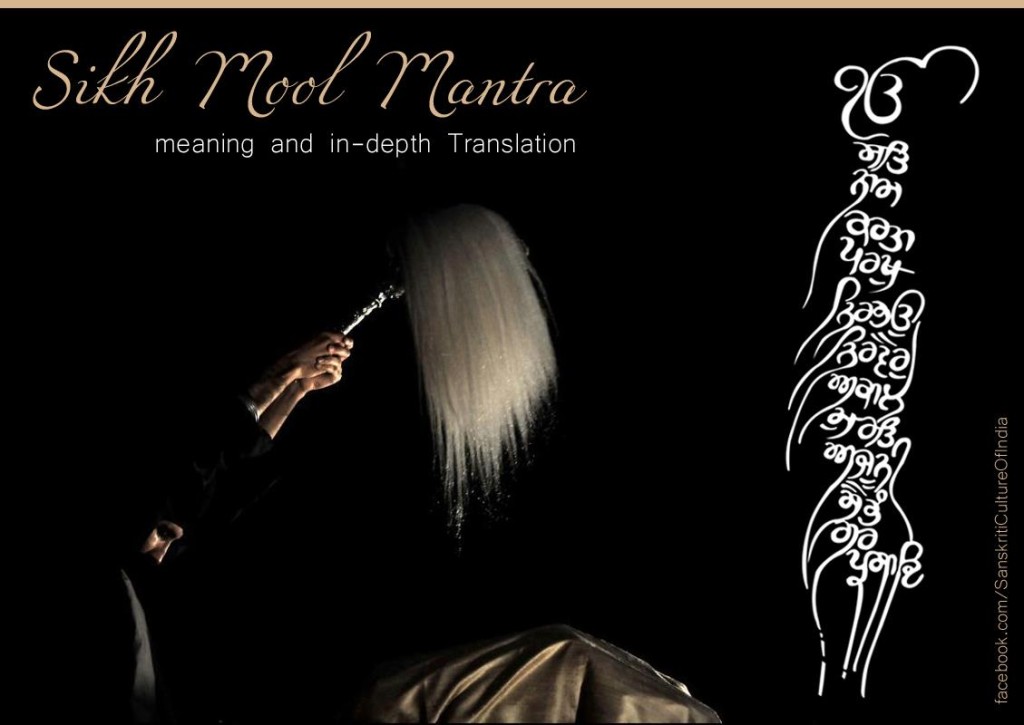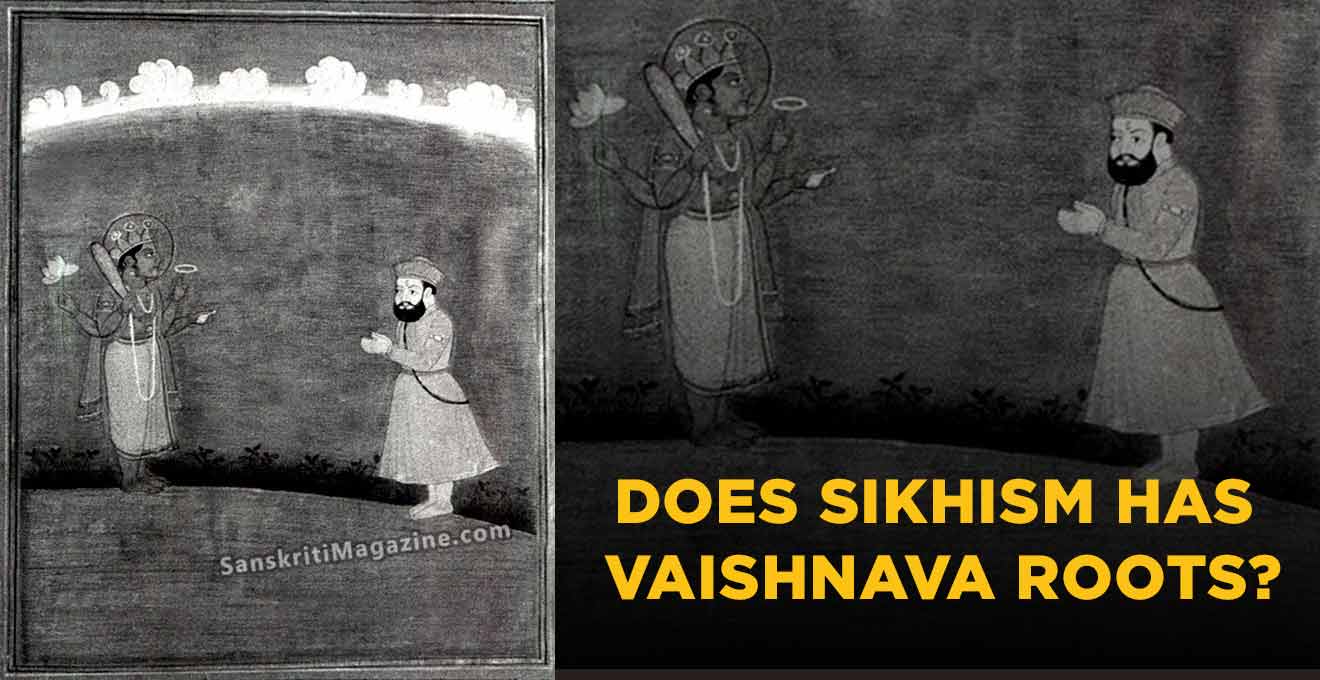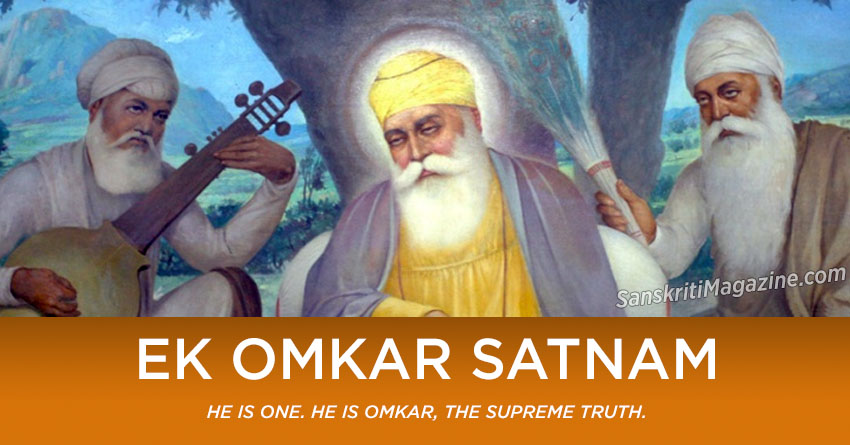Encapsulating the entire Sikh theology!
Both “Mool” (also spelt Mul) and “Mantra” are Sanskrit words — “Mool” simply meaning “Root” (or Source, Primordial, Base, Foundation, Origin…); and Mantra simply meaning incantation (or text of the Gurbani…). Hence Mool Mantra (or Moolmantar, Mool Mantar ) means Root-Mantra. Just as the fragrance is boxed in the flower, and the light of the sun is hidden in the colors, similarly, the Essence of the Divine (ਪ੍ਰਮੇਸਰ ਦੇ ਸਾਰੇ ਗਿਆਨ ਦਾ ਖਜਾਨਾ, Brahm-Giaan…) is summed up in the Mool Mantra. Revealed by First Guru of Sikhs Sri Guru Nanak Dev Ji, it’s the commencing or opening (first) composition of Sri Guru Granth Sahib (SGGS) – The Holy Book.
The Mool Mantra is the most important concept within the Guru Granth Sahib, and is considered the basis of Sikh theology; a position that is emphasized by its appearance as the first composition written in the Granth. It is philosophically dense, difficult to explain, and understand as it encapsulates the entire Sikh theology in roughly 8 concepts: it is the foundation upon which the proceeding verses, hymns, and prayers of the Guru Grant Sahib (which amounts to about 1430 pages) elaborate.
ੴ ਸਤਿ ਨਾਮੁ ਕਰਤਾ ਪੁਰਖੁ ਨਿਰਭਉ ਨਿਰਵੈਰੁ ਅਕਾਲ ਮੂਰਤਿ ਅਜੂਨੀ ਸੈਭੰ ਗੁਰ ਪ੍ਰਸਾਦਿ ॥
ੴ :
Ik Oankaar / One Universal Creator GOD
ਸਤਿਨਾਮ:
Satinaam / The Name is Truth
ਕਰਤਾ ਪੁਰਖ:
Kartaa Purakh / Creative Being Personified
ਨਿਰਭਉ:
Nirbhaou / No Fear
ਨਿਰਵੈਰੁ:
Nirvairu / No Hatred
ਅਕਾਲ ਮੂਰਤਿ:
Akaal Moorati / Image of Undying
ਅਜੂਨੀ:
Ajoonee / Beyond the cycle of Birth & Death
ਸੈਭੰ:
Saibhang / Self-Existent
ਗੁਰਪ੍ਰਸਾਦਿ:
Gurprasaadi / By Guru’s Grace
Ika / There is only One God
*********************
There is one God, the sole Supreme Being, the Ultimate Reality. Bhai Gurdas writes, “By writing 1 (one) in the beginning, it has been shown that Ek Oankar, God, who subsumes all forms in Him is only One (and not two or three)” The number one also affirms identity and not void orshunya.
The mind is capable of knowing only those things, phenomena, facts and concepts which are bipolar or relative. God being non-dual and absolute, is unknowable to the human mind. A simple example of this is in imagining distances: one could quite easily indicate that a meter in height is so high; even two or three metres. However when it comes to large distances, one mile, or two miles it cannot be imagined by the mind, or fully comprehended and so a standard is used for comparison: this mountain is x miles high, this tree is so high etc.
Ōaṅkāra
*******
The word ‘O-ankaar’ denotes that God manifests Himself ceaselessly throughout His creation in diverse forms, features and colours, and in this way becomes knowable to us. But, in spite of manifesting in such diverse forms, God remains One; He is immanent in His creation, while being at the same time transcendent. This God is at once one and many, implying unity in diversity. Kapur Singh suggests Oan = Transcedent, -kar = Immanent. The Mandukopanishad defines the word as: “That which was, is, will be, is all Onkar. And that which triple transcends is Onkar too.”
Sati Nāmu
Sati/His Name is Truth
****************
In Sanskrit, there are two words which have this root: Sat which means beingness, existence and Satya which means truth, validity. There is a great difference between the two. Satya is the quest of the philosopher who seeks truth. What is this truth? It lies in the rules whereby two plus two always equals four, and never five or three. So Satya is a mathematical formula, a man-made calculation, but it is not Sat. It is logical truth but not existential reality. Sat is that which just is, always has been, eternal. God is both Sat and Satya, existence as well as truth. Being both He can neither be fully attained through science, which probes truth, nor through art, which explores existence. Both are incomplete in their search, because they are directed only towards one half of Him. Where both meet, where the mind and heart meet, religion begins. If the mind overpowers the heart, science is born. If the heart overpowers the mind, the realm of art is entered: poetry, music, song, sculpture. Science and Art are dualities, religion is the synthesis.
Nāmu
*****
Naam means, literally, the Name. A fuller definition of the word can only be found within the Sri Guru Granth Sahib. Naam is God’s Word, or the Divine Essence. Etymologically, the word has a striking resemblance with the Greek neumena, or the Bright Essence, as opposed to phenomena. Naam is not merely the ‘Name of God’ as is commonly believed; it symbolises the Being of God filling all Creation. Naam is also referred to as Shabad in the Sri Guru Granth Sahib Ji.
Where there was no creation, there was nothing in existence – no air, light, water, earth or space.
God existed alone in deep meditation and self absorption. When God willed the manifestations of His values, He created universes, worlds and all material and other living beings by uttering a single Word. His Word is all pervasive and the sole source of all Creation; the Wordcreated the universes and supports and sustains all things within them. The Sri Guru Granth Sahib further enlightens us that God’s Word turned into waves of light, rays of which are present in all creatures and all other parts of His creation.
The revelation of the Essence of Reality within us is the revelation of Naam. When the revelation of Naam occurs within, the devotee sees the Essence of God pervading throughout His Creation.
Gurus have taught that their teachings are for all castes (varnas) and religions, and all have the right to receive the teachings of the Gurus. To initate our soul so that it starts towards the ultimate goal (SACHKHAND), a person has repeatedly and continuously to recite the Naam, and to cherish it in the heart all the time – this is the essence of prayer and devotion to God.
In Gurbani, the word Gurshabd or Shabd is synonymous with Naam. Without ceaseless recitation of Naam God cannot be realised. This does not refer to repeated verbal uttrances.
Karatā Purakhu / The Creator
*********************
Karta translates literally as the Doer, the Creator. Purukh translates literally as man, husband, basically a male person.
In the Sankhya system of Hindu philosophy, Purusha (the Universal Spirit), eternal, indestructible, all pervasive, is without activity or attribute, and it is left to Prakriti (primal nature), itself an uncaused cause, and an ultimate principle, to bring the phenomenal world into being.
The Sikh doctrine, however, while making use of the word, emphasizes Purusha being Himself and the only Creator. As in Sufi and Vaishnavic lore, He is the only He, His creatures being females longing to go out and Unite with Him.
By stating that God is the Creator, one may think that the Creator and His creation are separate. When an artist sculpts an idol they are both separate from one another. If the sculpture fractures, the sculptor is not affected in any physical manner, because the two are separate. There is no such similarity between God and His creation.
What kind of relationship exists between God and His creation? It is like the one between a dancer and his dance form. When man dances, can you separate him from his dance? Can he return home leaving the dance behind? If the dancer dies, the dance dies with him. When the dance ends, he is no longer the dancer. They are united, one. This is why since ancient times, Hindus have looked upon God as the dancer, “Natraj.” In this symbol the dancer and the dance are one.
A poet is no longer related to his poem once it is finished. The sculptor is separated from his sculpture as soon as it is completed. A mother gives birth to a child, and they are separate; the father is always distinct from the child. But God is not distinct from His creation; He is contained in it. It would be more accurate to say: the Creator is the Creation, or the Creator is nothing but creativity.
This is essentially the reason why Guru Nanak Dev says there is no need to renounce or run away from the world. Wherever you are, He is. Guru Nanak Dev gave birth to a unique religion in which the householder and sannyasi are one. He alone is entitled to call himself a Sikh who, being a householder is yet a sannyasi; who, being a sannyasi is still a householder. In light of this, it is difficult to be a Sikh. It is easy to be either a householder OR a sannyasi, but as a Sikh you are to be both. You have to remain in the house – but as if you’re not there for your own personal self. Keep running the shop, but maintain the remembrance of His name ever throbbing within; you can be immersed in mundane tasks of life, yet remember His name along with it.
A further point to note here is that the householder-sannyasi, as exemplified by Guru Nanak, and further emphasised by Guru Gobind Singh in terms of the Sant-Sipahi (Saint-Soldier), resulting in the formation of the Khalsa, is a formidable being because he cannot be corrupted. He who exists right in this world and yet is not of it, can in no way be tempted. The Khalsa is spiritually rich, the spirituallity cannot be taken from him/her and also he/she earns a living and yet is not enamoured by the lure of wealth and worldly pleasures.
Nirabha’u / Without Fear
******************
Bhao translates as fear, and Nir translates as without. God is without fear: Origin of fear is possible only if there is another being besides Him. Fear always involves the other: if someone can take something away from you it destroys your security. But, as God is Absolute, Himself immanent in all His Creation, whom is He to be afraid of? A corollary to this attribute, stated positively, is that God is all Bliss.
Niravairu / Without Hate
******************
Vair translates as enmity, hostility and Nir translates as without. God is without rancour or enmity; As God is the Sole Supreme Being, Himself immanent and pervasive in His Creation, against whom is He to have rancour, enmity, hatred or ill-will? A corollary to this attribute, stated positively, is that God is all Love. He is above all fear and is free from all thoughts of enmity.
Akāla Mūrati / Being Beyond Time
*************************
Akaal translates as ‘not subject to time or death’ and Moorat translates as form, shape, image. God is a Being beyond time: An Eternal, Indestructible Entity.
Time means change. We are aware of time because we are surrounded by change: the sun rises and it is morning, then it is afternoon and then evening; first there is the infant, then the youth, then the old man; a healthy man becomes ill, an ill person healthy; a rich man becomes a pauper, a pauper becomes a king. For God there is no time because He is eternal, perpetual, immortal. He is forever. For Him nothing is changing; everything is static. Change is the experience of sightless eyes that do not see things in their full perspective. If we could see things from the furthest vantage point all change drops away, and then time stops; it ceases to exist. For God all things are as they are; nothing changes, everything is static.
Ajūnī / Unborn / Not-incarnated
***********************
Joon is a feminine noun and translates as ‘birth, existence’, the A- suggests ‘Beyond’.
God is Unborn, Uncreated, Beyond Incarnation: He Himself, being the Primal Being, no being prior to Him can be conceived.
Sikhism rejects out of hand the theory of incarnation of God. The Guru-Saint thus is not God-incarnate, even though he has all the attributes of a living, human God and so identified with Him, as is his Word the (disembodied) embodiment of the Gur through which he reveals his God-nature.
Saibhang / Self-existent
*****************
Saibhang is derived from the Sanskrit ‘swayambha’ and as stated above, is translated as self-existent. The meaning of self-existent is that He is self-creating, He exists by Himself and has no support except His own; He is self-begotten and has no origin.
Gura Prasādi / By the grace of the Guru
**************************
Gur stands for Guru: Master, Spiritual Teacher, Guide. Prasad translates as favour, grace; thus He is attained by the Grace of the Enlightener.
The above translation is that which is given by the majority of Sikhs. Both Macauliffe and Dr. Gopal Singh have suggested that the Mool Mantar was intended as epithets of God – Macauliffe suggest the phrase to mean, “the great and bountiful.”
Guru Nanak Dev ji had no human Guru; his Guru was Satgur. Sat(TRUE/TRUTH)gur(in Gurmukhi literally meaning IDEA/SOLUTION/KEY to a problem). It was during the spiritual supremacy of his successors the favour of the Guru was invoked, and deemed indispensable for deliverance. Moreover, suggests Macauliffe, though Gur Prasad does sometimes in the Guru Granth Sahib means the Guru’s favour, it more often expressed by Guru Parsadi.
Dr. Gopal Singh says that “…many Sikh and European translators have joined the word Gur and Prasad together to suggest: “By favour (or Grace) of the Guru (is He dwelt upon)”. But here Guru Nanak is giving, in monosyllables, the attributes of God. The Guru here, therefore, is Guru-in-God whose Grace is invoked. As such Guru can only be rendered as “Enlightener” which is also its literal meaning in Sanskrit.”











